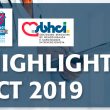There is no survival advantage with invasive coronary revascularization over initial medical treatment in patients with chronic coronary artery disease. However, revascularization did reduce the incidence of unstable angina and its symptoms, according to this new meta-analysis published in Circulation and presented virtually at EuroPCR 2020. There was no significant difference in spontaneous infarctions overall, but<a href="https://solaci.org/en/2020/07/08/europcr-2020-revascularization-vs-initial-medical-treatment-in-chronic-patients/" title="Read more" >...</a>
Repeat Revascularization Is Not Benign, at Least in Left Main Disease
After the “EXCEL scandal” at the end of last year, study investigators have been publishing explanations and sub-studies that were planned from the beginning, but which can still be interpreted as explanations. This sub-study states that revascularization was more common in the angioplasty arm, but only revascularizations performed on the target lesion, regardless of the<a href="https://solaci.org/en/2020/02/07/repeat-revascularization-is-not-benign-at-least-in-left-main-disease/" title="Read more" >...</a>
Pre-TAVR Revascularization: Angiographic or Physiological?
In patients undergoing transcatheter aortic valve replacement (TAVR), fractional flow reserve (FFR) guided revascularization is associated with favorable results compared against the traditional angiography guided revascularization. Given the complete lack of randomized studies, this observational study is the best we have to decide how to guide revascularization in patients with symptomatic severe aortic stenosis undergoing<a href="https://solaci.org/en/2019/11/28/pre-tavr-revascularization-angiographic-or-physiological/" title="Read more" >...</a>
AHA 2019 | COMPLETE: Complete Revascularization Is Superior since It Treats Other Vulnerable Plaque
This COMPLETE sub-study using optical coherence tomography (OCT) showed the prevalence of vulnerable lesions other than the culprit which should provide a physiopathological explanation of the benefit of complete revascularization observed in the original study. STEMI patients with multivessel disease will benefit from complete revascularization in terms of reduced cardiovascular death and repeat MI according<a href="https://solaci.org/en/2019/11/27/aha-2019-complete-complete-revascularization-is-superior-since-it-treats-other-vulnerable-plaque/" title="Read more" >...</a>
TCT 2019 | COMPLETE: Sub-Study to Find Out Complete Optimal Revascularization Timing in STEMI
Courtesy of SBHCI. The COMPLETE study was carried out to assess the benefit of complete revascularization vs culprit vessel revascularization in the context of ST elevation acute myocardial infarction. This COMPLETE sub-study presented at TCT 2019 scientific sessions simultaneously published in JACC assessed the optimal timing of complete revascularization. The general study had already shown<a href="https://solaci.org/en/2019/10/01/tct-2019-complete-timing-substudy-a-randomized-trial-of-complete-staged-revascularization-vs-infarct-artery-pci-alone-in-patients-with-acute-myocardial-infarction-and-multivessel-disease/" title="Read more" >...</a>
Revascularization in Spontaneous Coronary Artery Dissection Causing ST-Segment Elevation Myocardial Infarction
Spontaneous coronary artery dissection is an increasing cause of acute myocardial infarction, particularly in younger women. These infarctions are frequently treated conservatively given the risks entailed by revascularization, due to the possibility of causing an antegrade or retrograde expansion of the dissection. The uncertainty around treatment for these patients gave way to this study (recently<a href="https://solaci.org/en/2019/09/24/revascularization-in-spontaneous-coronary-artery-dissection-causing-st-segment-elevation-myocardial-infarction/" title="Read more" >...</a>
Is Complete Revascularization the Right Choice in Acute Myocardial Infarction with Multivessel Disease?
Courtesy of Dr. Carlos Fava. Primary coronary angioplasty has been the treatment of choice for acute myocardial infarction (MI) for many years, but such strategy is associated with nonculprit lesions in a large group of patients. While it has been proven that nonculprit-lesion revascularization offers better outcomes, the groups that would benefit from it are<a href="https://solaci.org/en/2019/09/13/is-complete-revascularization-the-right-choice-in-acute-myocardial-infarction-with-multivessel-disease/" title="Read more" >...</a>
Supervised Exercise and Revascularization for Intermittent Claudication
The combination of optimal medical treatment plus angioplasty plus supervised exercise seems to be the first line of treatment for patients with intermittent claudication, in terms of maximum walking distance and best quality of life. This combination requires a multidisciplinary team for the best possible results. The aim of this study was to conduct a<a href="https://solaci.org/en/2019/07/23/supervised-exercise-and-revascularization-for-intermittent-claudication/" title="Read more" >...</a>
Improved Outcomes after Lower Limb Revascularization
Operator ability combined with improved and diverse devices for lower limb revascularization has clearly increased in the last decade. However, is this technical feasibility we did not use to have translating into better clinical outcomes for patients, or is it simply inflating our interventionist egos? This study aims at answering the question above by identifying<a href="https://solaci.org/en/2019/07/09/improved-outcomes-after-lower-limb-revascularization/" title="Read more" >...</a>
Staged Complete Revascularization vs. Culprit Vessel PCI at Long-Term
Staged complete revascularization in patients with acute myocardial infarction and multivessel coronary disease is superior to culprit PCI only at five-year follow-up. The outcomes of this retrospective analysis show the benefit of staged PCI, though it might be attenuated in diabetic patients. Outcomes are consistent with previously published randomized studies. Nevertheless, we should remain cautious<a href="https://solaci.org/en/2019/05/22/staged-complete-revascularization-vs-culprit-vessel-pci-at-long-term/" title="Read more" >...</a>









